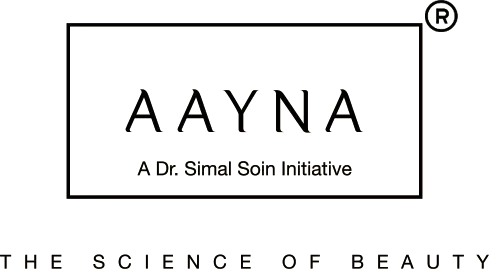Unlocking the mystery behind hormonal acne isn’t just about skincare; it’s about understanding your body’s intricate signals and how they impact your skin. Picture this: you’re diligently caring for your skin, and out of nowhere, a breakout ambushes your face. Sound familiar? Blame it on those pesky hormonal fluctuations that seem to strike at the worst times, thanks to stress messing with our hormones.
Whether you’re reminiscing about your teenage acne battles or grappling with hormonal shifts during peri-menopause, one thing’s for sure: hormonal acne doesn’t discriminate. It can pop up unexpectedly, making a grand entrance right on cue with your menstrual cycle, month after month.
But here’s the silver lining: while hormonal acne may seem like an unavoidable rite of passage, it’s not invincible. With consistent care and a holistic approach encompassing both skincare and diet, you can tame those unruly breakouts and unveil clear, bump-free skin.
So, what’s the secret sauce to combat hormonal acne? It’s a blend of expert advice from seasoned skincare professionals, including the wise counsel of board-certified dermatologists. They’ve decoded the enigma of hormonal acne, pinpointing its hiding spots, unraveling its causes, and most importantly, unveiling the keys to prevention and treatment.
But hey, before we dive into the nitty-gritty, let’s embark on a journey to demystify hormonal acne. It’s time to decode its secrets and arm ourselves with the knowledge to conquer those stubborn breakouts once and for all.
Meaning of Hormonal Acne
Hormonal acne isn’t just reserved for the teenage years. Nope, it’s a sneaky visitor that can crash the party in your 20s, 30s, and even your fabulous 40s. And guess what? It doesn’t discriminate. Whether you’ve battled cystic breakouts before or sailed through life with clear skin, hormonal acne can still rear its head.
So, what does this troublesome acne look like? We can simply say that it’s the kind of acne that packs a punch, showing up as painful, red papules, angry pustules, and deep cysts, especially on the lower half of your face. And beware – attempting to pop these bad boys can lead to long-term scarring. Yikes! While some lucky souls may only deal with a breakout or two around that time of the month, others might face a relentless onslaught of acne all month long. Talk about unfair!
Hormonal Acne Areas:
Where does hormonal acne like to hang out? It usually occurs at the lower face – think lower cheeks, jawline, and chin – as well as the body, including the chest, back, and shoulders. Oh, and don’t be surprised if you find a few unwelcome guests popping up between your brows too.
Now, let’s dig into the root of the issue. Hormonal acne loves to make its grand entrance along the lower third of your face, just in time for your period – thanks, testosterone! But wait, there’s more. Pregnancy, menopause, and even conditions like PCOS can all play a role in triggering hormonal acne. It’s like our hormones have a secret mission to wreak havoc on our skin, isn’t it?
Hormonal Acne Treatments
So, you’re facing off against hormonal acne – a formidable opponent indeed. Sure, it might feel like battling against your own hormones is an uphill struggle, but there are tricks up our sleeves to help tip the scales in our favor. Cue the lifestyle changes and strategic skincare maneuvers!
Listed below are the top solutions and treatments you can go for to get rid of hormonal acne.
- Consider Your Diet to Avoid a Hormonal Imbalance: It is suggested to skip dairy consumption, particularly skim milk and fat-free dairy, which can exacerbate hormonal acne due to their ability to stimulate testosterone production. Additionally, foods high in sugar, refined flour, and processed carbohydrates should be avoided to prevent insulin spikes that contribute to inflammation and oil production.
- Exfoliate With Salicylic Acid: It is recommended incorporating salicylic acid into your skincare routine to unclog pores and reduce inflammation. Look for products containing up to two percent salicylic acid.
- Limit Stress to Reduce Inflammation: Stress isn’t just bad for your mindset – it’s also a major trigger for inflammatory responses that exacerbate acne.Reduce your stress levels through hydration, exercise, adequate sleep, and maintaining gut health with probiotics.
- Maintain a Preventative Skincare Routine: A lot of emphasises is given to the importance of consistency in skincare, recommending daily sunscreen, topical retinoids, and regular use of exfoliants like alpha-hydroxy acids or salicylic acid to prevent future breakouts.
- See a Dermatologist For a Prescription Treatment: If over-the-counter treatments aren’t effective, consult a dermatologist for personalized prescription options. Treatments may include acne extractions, steroid injections for hormonal cysts, or prescription medications tailored to your skin’s needs.
- Try LED Light Therapy: Harness the antibacterial and anti-inflammatory properties of blue light therapy to keep acne at bay. There are alot of devices that can help reduce inflammation and regulate sebum production.
- Get a Chemical Peel: Chemical exfoliants can remove dead skin cells, prevent acne, and improve the penetration of skincare products. Consider incorporating chemical peels into your skincare routine for a radiant complexion.
- Consider Zinc Supplements: Dr. Love recommends zinc supplements for their anti-inflammatory properties, which can benefit acne-prone skin. Both oral and topical zinc formulations may help alleviate acne symptoms.
With these expert-approved strategies in your arsenal, you’ll be well-equipped to tackle hormonal acne head-on and achieve clear, radiant skin.



